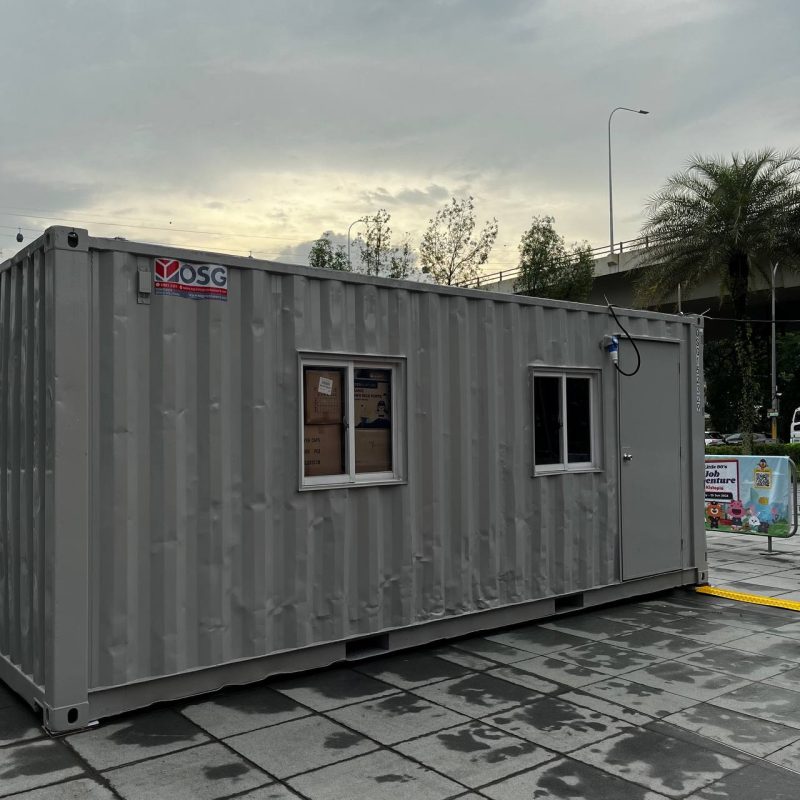How to Insulate Shipping Containers for Year-Round Comfort

Shipping container homes have grown in popularity due to their affordability, durability, and eco-friendliness. However, ensuring year-round comfort in these metal structures can be challenging without proper insulation. Temperature extremes—sweltering heat in summer and freezing cold in winter—make it crucial to insulate your container home effectively. This article explores the best practices for insulating shipping containers to create a comfortable living environment in all seasons.
Why Insulation Is Essential
Shipping containers are made of steel, a material that absorbs and transfers heat and cold very efficiently. Without proper insulation, the container can become unbearably hot in summer and freezing in winter, leading to discomfort and higher energy costs. Insulating your container helps maintain a stable interior temperature, improves energy efficiency, and reduces moisture buildup, which can lead to rust and condensation problems.
Types of Insulation Materials
There are various types of insulation materials suitable for shipping containers, each with its pros and cons. Choosing the right one depends on your location, budget, and desired level of energy efficiency.
1. Spray Foam Insulation
One of the most popular and effective methods for insulating shipping containers is spray foam insulation. It is applied as a liquid that expands and hardens, creating an airtight seal. This type of insulation is particularly good for shipping containers because it fills gaps and adheres directly to the metal surface, preventing air leaks and moisture infiltration.
- Pros:
- High R-value (thermal resistance) per inch
- Prevents moisture buildup and condensation
- Acts as a vapor barrier
- Cons:
- Can be expensive compared to other options
- Requires professional installation for best results
2. Rigid Foam Insulation
Rigid foam boards are another popular choice for shipping container insulation. These panels, typically made of polystyrene, polyisocyanurate, or polyurethane, can be installed inside or outside the container. When applied to the interior, they save space, but they must be sealed properly to avoid air and moisture leaks.
- Pros:
- High R-value
- Easy to install
- Cost-effective
- Cons:
- Does not provide as tight a seal as spray foam
- Vulnerable to moisture if not sealed properly
3. Blanket (Batt) Insulation
Batt insulation, often made of fiberglass or mineral wool, is a more traditional option. This material is typically installed between studs, making it ideal if you plan to build interior walls in your container. While it’s more affordable than spray foam or rigid foam, it may not be as effective in preventing moisture problems.
- Pros:
- Inexpensive and widely available
- Easy to install, especially for DIY projects
- Cons:
- Poor moisture resistance
- Requires more interior space
4. Eco-Friendly Insulation Options
If sustainability is a key concern, consider eco-friendly insulation materials such as sheep’s wool, cotton, or recycled denim. These materials are effective at maintaining temperature control while being kind to the environment.
- Pros:
- Environmentally friendly
- Safe to handle
- Naturally resistant to mold
- Cons:
- Higher cost
- May not offer as high an R-value as other materials
External vs. Internal Insulation
Deciding whether to insulate the interior or exterior of your shipping container will depend on your design goals and budget.
- Internal Insulation: Installing insulation inside the container is more common and simpler. However, it will reduce the available living space slightly. Materials like spray foam, batt insulation, or rigid foam are often used internally.
- External Insulation: For those who want to maintain the container’s original dimensions or improve aesthetics, external insulation is an option. This method involves adding insulation to the outside of the container and then covering it with cladding or another exterior material. This technique provides excellent protection from the elements without reducing interior space, but it is more expensive and labor-intensive.
Insulating Against Moisture and Condensation
Condensation is one of the biggest challenges in shipping container homes, as metal surfaces tend to sweat when there is a difference in temperature between the interior and exterior. Proper insulation can minimize this problem, but additional moisture control techniques should also be considered.
- Vapor Barriers: Installing a vapor barrier is essential in reducing moisture buildup, especially in areas with high humidity. This can be applied beneath the insulation layer to prevent condensation from forming between the insulation and the metal walls.
- Proper Ventilation: Adequate ventilation is equally important to prevent moisture problems. Installing vents, windows, or mechanical ventilation systems can improve air circulation and help regulate interior humidity levels.
Additional Tips for Year-Round Comfort
- Use Reflective Coatings: Reflective roof coatings can reduce heat absorption, keeping your container cooler in the summer. These coatings reflect sunlight and reduce the heat load on your insulation system.
- Double-Glazed Windows: If your container home includes windows, opt for double-glazed or energy-efficient options to minimize heat loss in the winter and reduce heat gain in the summer.
- Sealing Gaps: Ensure all gaps and cracks are properly sealed, especially around doors and windows. Small leaks can lead to significant energy loss, reducing the effectiveness of your insulation.
Conclusion
Insulating your shipping container properly is the key to ensuring year-round comfort. By choosing the right materials and methods, you can create an energy-efficient, comfortable living space that stands up to temperature extremes. Whether you go for spray foam, rigid boards, or eco-friendly options, the right insulation will transform your shipping container from a metal box into a cozy, livable home.

